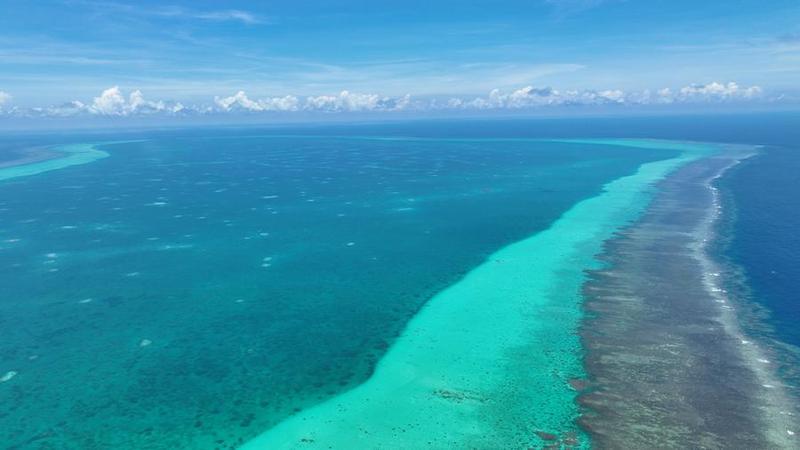CHINA ATTACKING TAIWAN: A TASK EASIER SAID THAN DONE?
They have been governed separately for over seven decades but China has recently made its most provocative of threats to publicise its intention to annexe Taiwan. The projection of Chinese military did not convert into military action this time, leaving analysts wondering what exactly is in China’s mind.
In the first week of October China set new records with intrusions into Taiwan’s air defense identification zone (ADIZ). As many as 56 aircraft of the PLA Air Force entered the zone’s southwest corner on the first day. The flights involved a core of heavy bombers escorted by 30 or more fighter jets (that is how the air force formation is in a real attack).
Taiwan’s Ministry of Defence announced that People’s Liberation Army Aircraft’s 34 Shenyang J-16 fighter jets, two SU-30 fighter jets, two Shaanxi Y-8 anti-submarine warfare (Y-8 ASW) planes, two KJ-500 airborne early warning and control aircraft (KJ-500 AEW&C), and 12 Xian H-6 bombers entered Taiwan’s air defence. The aircraft all flew sorties in the southwest corner of Taiwan’s ADIZ, just to the northeast of the Dongsha Islands, Taiwan News reported.
This is the most daring intrusion since China’s manoeuvres in the ADZ began last year. The zone is not Taiwan’s own but a buffer zone around it which is not binding on any country in international law. That is the chink in Taiwan’s armour that China exploits. By flying into the zone, China flies literally on the edge of Taiwan’s actual airspace. That is an act of bullying.
Simultaneously, both sides exchanged sharp words. Chinese President Xi Jinping vowed to achieve “peaceful reunification” with Taiwan though he did not mention any use of force this time. In July, it may be recalled, Xi promised to “smash” Taiwan’s attempts, if any, at formal independence. Two years ago, Xi openly threatened to use force to bring Taiwan under Beijing’s control.
Xi said after the air intrusions that the Chinese people have a “glorious tradition” of opposing separatism. He said: “Taiwan independence separatism is the biggest obstacle to achieving the reunification of the motherland, and the most serious hidden danger to national rejuvenation.” Peaceful “reunification” best meets the overall interests of the Taiwanese people, but China will protect its sovereignty and unity, he said.
Striking a warning note to Taiwan, the Chinese President said: “No one should underestimate the Chinese people’s staunch determination, firm will, and strong ability to defend national sovereignty and territorial integrity. The historical task of the complete reunification of the motherland must be fulfilled, and will definitely be fulfilled.”
In a defiant speech, Taiwanese President Tsai Ing-wen said Taiwan will “not bow to pressure from China” and will defend its democratic way of life. She said Taiwan was “standing on democracy’s first line of defence”. She said the island would not “act rashly” but would bolster its defences to “ensure that nobody can force Taiwan to take the path China has laid out for us”.
The international community expected the United States to come to the defence of Taiwan or at least back the island nation’s stand. However, President Joe Biden had a phone conversation with President Xi and told the media alter that he had asked Beijing to “cease its military, diplomatic, and economic pressure against Taiwan and instead engage in a meaningful dialogue” with it. Biden said: “We agree we’ll abide by the Taiwan agreement.” The American media said “Biden appeared to be referring to the United States’ long-standing ‘One-China’ policy…this political stance officially recognizes Beijing rather than Taipei. …But Washington’s decision to establish diplomatic ties with Beijing instead of Taiwan comes with the proviso that the future of Taiwan will be determined by peaceful means”.
China has launched a multi-pronged campaign against Taiwan since last year. The overt signs of this are the intruding flights of PLAAF aircraft or the patrolling of Taiwan Strait by Chinese naval vessels.
At the same time, it has obliquely used retired politicians and the social media to carry out a jingoistic campaign against Taiwan. The campaign reached its nadir recently when Victor Gao, an interpreter of Chinese leader Deng Xiaoping, called for ethnic cleansing of any Taiwanese with Japanese heritage if China retook the island.
Social media experts have caught Chinese government-backed campaign on Twitter to promote the slogan, “keep the island, rid of its people”. The experts suggest China is encouraging such ethno-nationalist sentiments to convince the world that the Chinese people back the movement for unification of Taiwan with the mainland.
The latest intrusions serve a few purposes of the Chinese Communist Party. It is seen as an attempt to find out how many countries come out in support of Taiwan, especially after the formation of AUKUS by the US, the UK and Australia and Lithuania being the latest country to welcome a de facto Taiwanese embassy in Vilnius. Two, they are also a reminder to the Taiwanese government and people the costs they have to bear for opposing and confronting China.
Despite the fireworks, there was no real threat of a Chinese invasion of Taiwan this time. How long will that suspense last, is the question. There are those who suggest that China is modernising its navy and military to be in a position to control the neighbourhood in the South China Sea if and when it wants to take its confrontation with Taiwan to its logical conclusion.
China’s military preparedness has to take into account the material and strategy needed for a naval invasion across the Taiwan Strait. It has in its armoury long-range rocket artillery that can reach all strategic places in Taiwan. On the other hand, China has to consider the other side of the coin: What are the things that can stall its plans? For instance, the possibility of American military intervention not for drawing China into a war to defend Taiwan but to order a naval blockade of China in the Pacific and the Indian Ocean.












